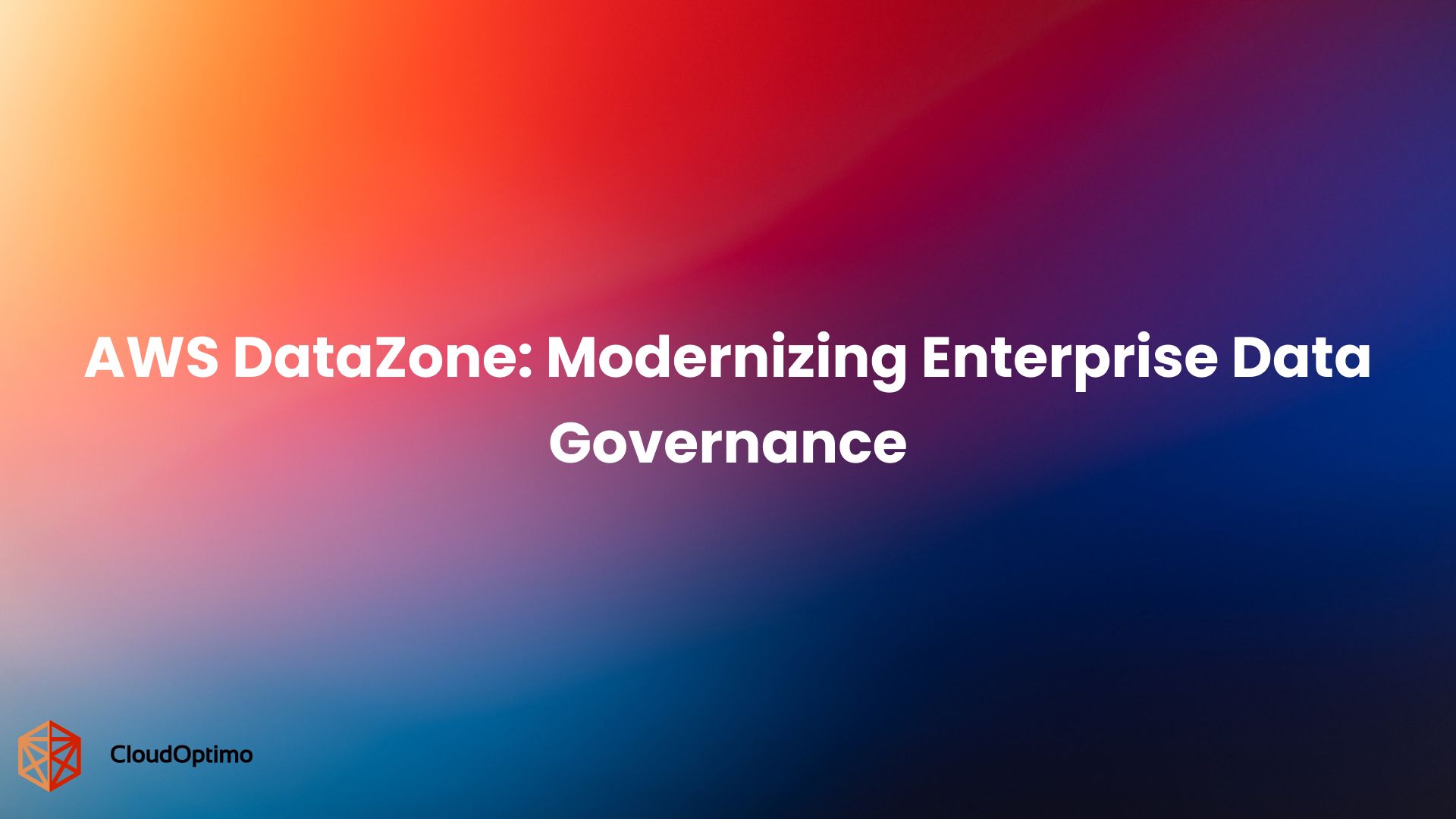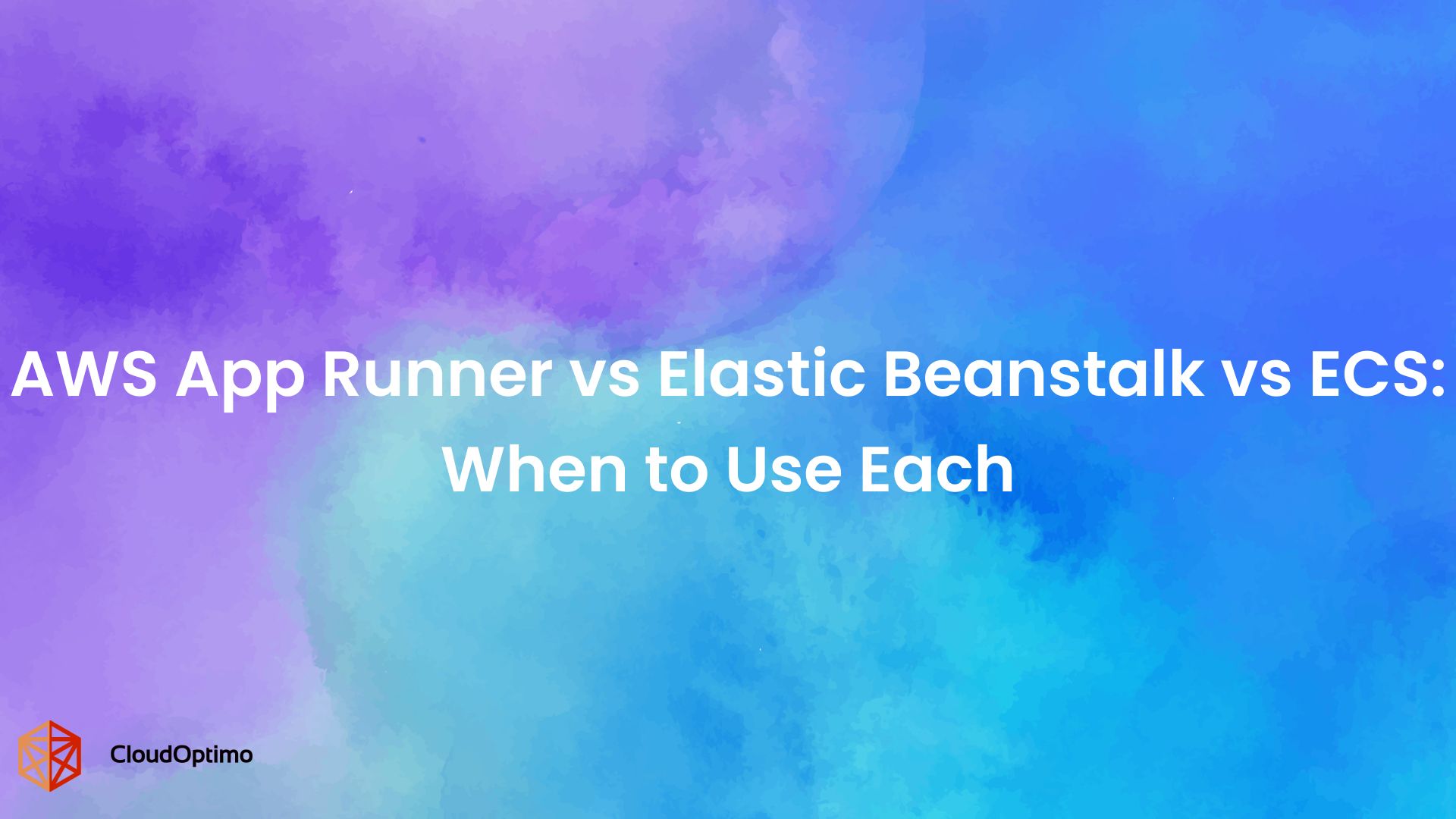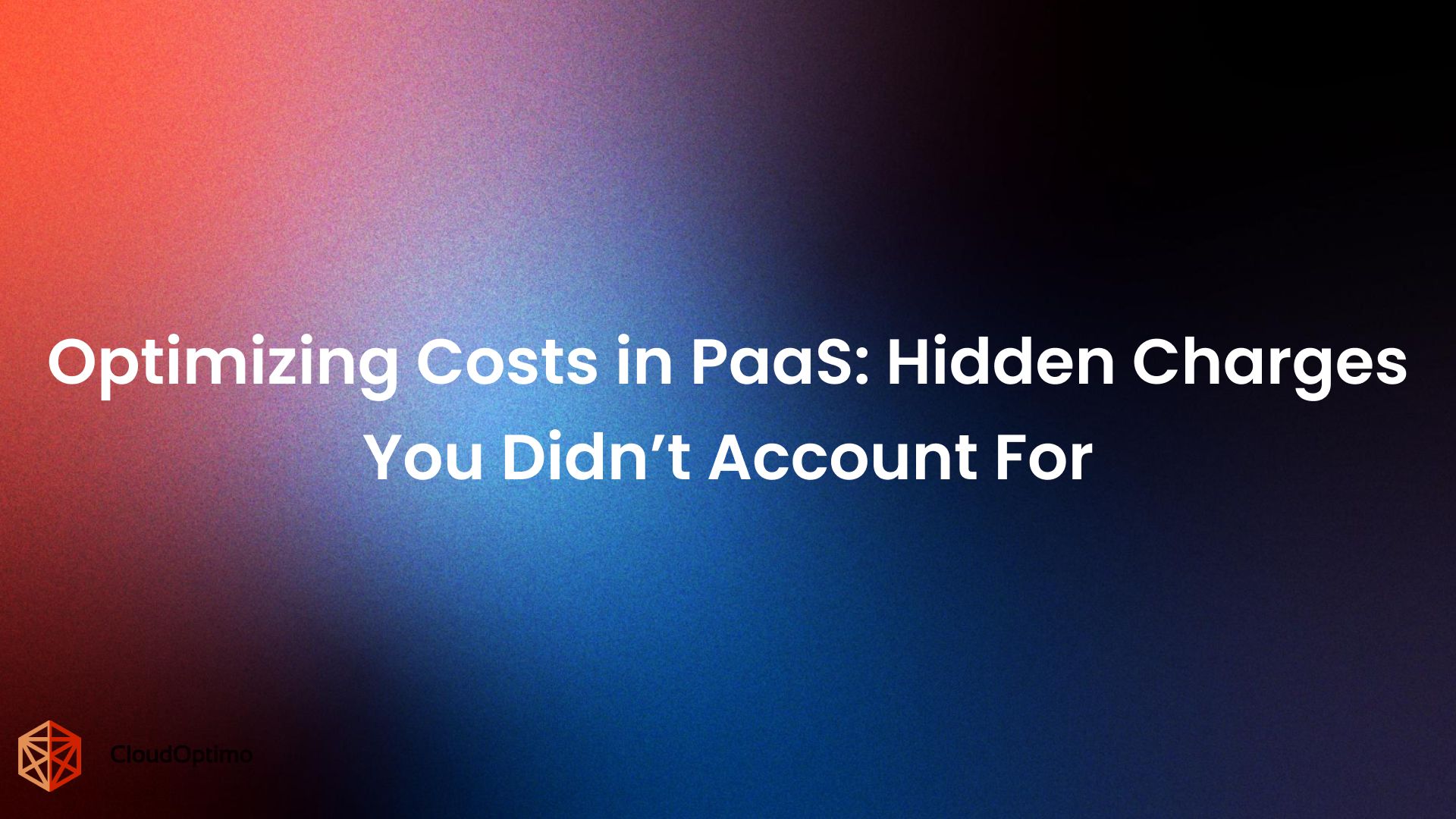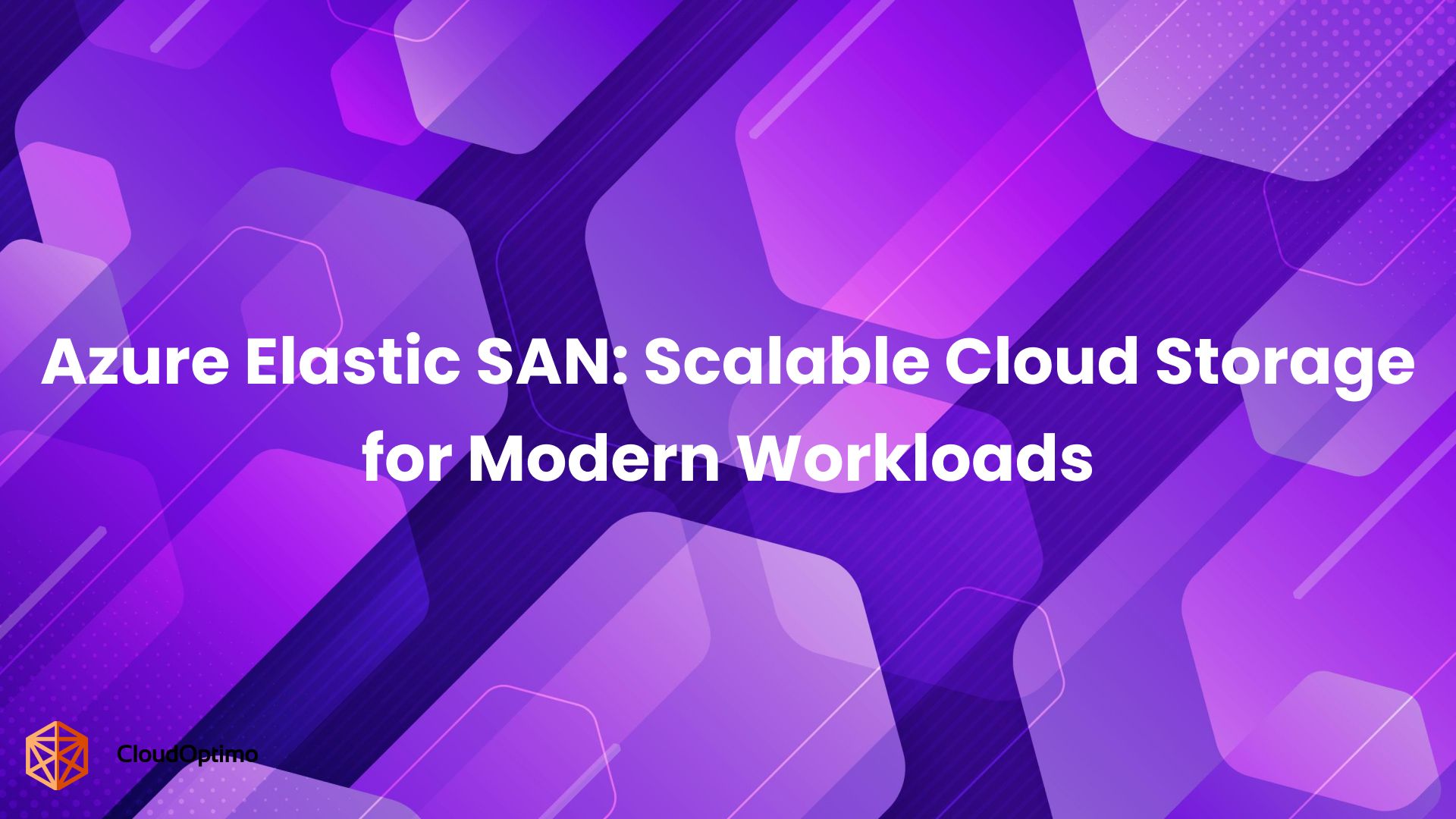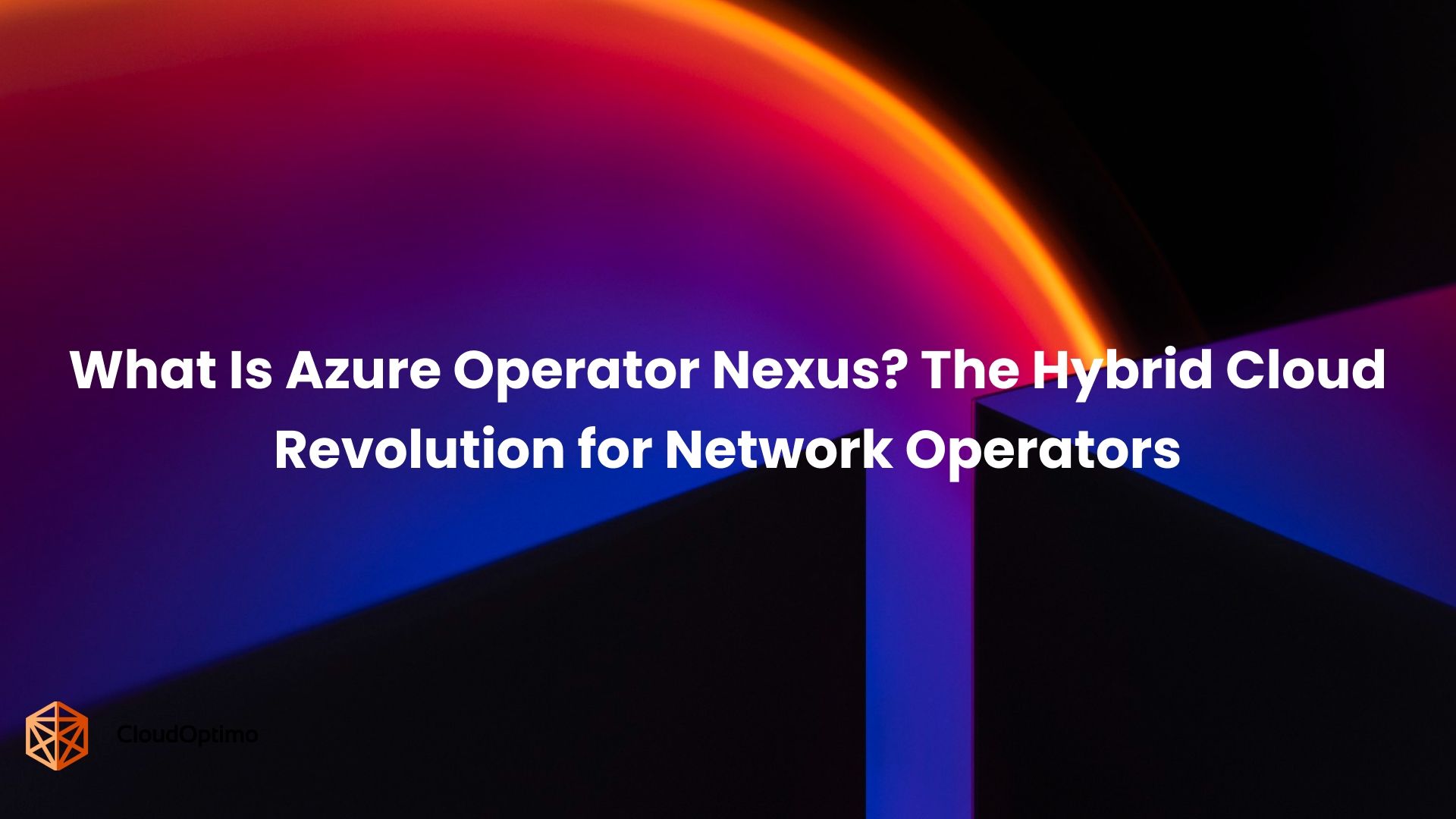Your cloud bill increased 30% last quarter while your application traffic grew only 15%. This scenario affects most organizations today. The problem arises from applying single compute strategies across all workloads, regardless of their actual behavior patterns.
Cloud cost strategies built on a single choice, Spot for savings or Serverless for speed, have reached their limit. The results are showing up in rising bills, rigid architectures, and missed optimization opportunities.
Modern workloads - real-time APIs, batch analytics, event-driven pipelines require different cost and performance tradeoffs. A single compute model cannot cover them all.
Relying on either spot or serverless alone forces teams into tradeoffs they no longer need to make. These are two important options, but using them in isolation often creates gaps in performance, availability, or cost management. Teams need to think beyond individual services and start focusing on how multiple compute types can work together based on actual workload behavior.
Align Compute Models with Usage Patterns
Cloud spending is increasing rapidly, often by 20 – 30% annually, and many teams are under pressure to manage this growth more effectively. What was once a predictable monthly expense now changes based on usage and demand, affecting overall business margins.
In response, organizations often default to basic models:
- Reserved instances for stable, predictable services
- Spot instances for cost-effective, fault-tolerant tasks
- Serverless functions for scaling fast in response to traffic spikes
These models work, but only within defined limits. Used alone, they lead to decisions that prevent optimization across the entire system.
The Tradeoffs of Spot Savings vs. Serverless Scaling
Treating the choice between Spot and Serverless as final is too narrow. Spot instances are ideal for jobs that can restart without losing progress. But the tradeoff is real: interruptions can happen at any time, and teams must build fallback processes or risk failed jobs. Serverless is well-suited for short-lived, highly variable tasks. The catch is that high-frequency or long-running tasks quickly become expensive, and execution limits still constrain what can run on serverless.
A real-time API that handles customer requests may need the flexibility of serverless, while its background analytics pipeline is far better suited to spot compute. Relying on just one model limits both cost efficiency and system flexibility.
Rigid Compute Models Break Under Changing Workload Demands
Most cloud systems today are made of many parts, each with different compute behaviors. Some run continuously. Others trigger under specific conditions. Some need instant scale, while others run in the background with lower urgency.
Rigid compute models apply the same rules to all of them, even when their needs are different. This creates inefficiencies that often go unnoticed until costs rise or performance declines.
Teams often choose serverless for simplicity or spot for savings, assuming the whole workload fits that model. In reality, only certain parts benefit, while others are over-optimized or poorly placed.
Limits of Predictability
Serverless works well for short, event-driven tasks, but high-frequency or compute-heavy processes become costly. Spot instances can deliver savings, but their unpredictability introduces operational risk.
These challenges grow when usage patterns shift:
- A rarely used function becomes critical after a product launch
- A batch job misses deadlines due to spot interruptions
- A new feature built on serverless exceeds cost targets unexpectedly
Planning compute in advance no longer guarantees long-term alignment with real-world behavior.
Assumptions Lead to Inefficiency
Most cost strategies are built around assumptions about workload behavior. Static plans based on forecasts or early usage often drift from actual demand.
The problem is not the tools, but how they are applied. Using one compute model for all components leads to forced compromises, redundant fallback systems, and increasing architectural complexity.
Adopt Flexible Compute Placement
Choosing a service is not enough. Each component should run on the compute model that matches how it behaves in reality, not how it was expected to behave.
This requires visibility into usage and the flexibility to adjust workloads as patterns change. Without it, cost and performance management remain reactive.
A hybrid compute strategy solves this by aligning compute models with real workload behavior instead of static plans.
Defining Hybrid in the Context of Cloud Cost Strategy
Hybrid, in this context, means combining different compute models like spot instances and serverless functions within the same public cloud.
This removes the added complexity of managing across environments. All infrastructure stays within a single provider’s ecosystem, using native services, tools, and security controls.
A Layer Above Compute Services
It acts as a design layer that decides where each part of a system should run based on how it behaves. This layer evaluates cost sensitivity, performance needs, failure tolerance, and real-time usage patterns.
To function well, it needs clear rules for workload classification, automated policies to apply them, and real-time visibility into resource usage and cost performance across services.
Flexibility Against Unpredictable Demand
Modern workloads are unpredictable. Traffic spikes, seasonal campaigns, viral content, break static plans. Hybrid makes systems flexible. Baseline workloads can run on cost-efficient spot instances, while sudden spikes trigger serverless functions that scale instantly. Instead of over-provisioning or paying for unused capacity, hybrid lets the system adapt automatically.
This kind of flexibility reduces reliance on over-provisioning and avoids performance degradation when demand rises quickly.
Design Decisions That Support a Spot + Serverless Model
A hybrid compute strategy only delivers value when supported by an architecture that can adapt to changing workload behavior. That means the architecture must separate different workload types, stay responsive under change, and shift workloads in real time without adding complexity.
Separate What Can Shift From What Must Stay
Hybrid strategies rely on understanding which parts of a system are predictable and which aren’t. Baseline workloads that run steadily can sit on cost-efficient resources, while bursty or event-driven tasks can leverage serverless or spot options. This isn’t just categorization, it’s about knowing which workloads can tolerate interruptions and which demand consistent performance.
Design for Flexibility, Not Perfection
A hybrid model works by keeping the system flexible, not perfect- letting workloads move between compute types as needed. Instead of over-provisioning or reacting after costs spike, the system adjusts itself automatically, keeping performance stable while controlling spend.
Use Resilience as a Control Mechanism
Spot interruptions or function limits are not exceptions; they are part of the system’s behavior. By treating them as signals, not errors, systems can reroute, retry, or adjust processing without intervention. These controls allow teams to maintain stability without overbuilding fallback paths.
Leverage Native Cloud Tools
Cloud providers offer tools to make hybrid compute easier to manage. Step Functions coordinate workflows across Lambda and container tasks. Fargate Spot enables cost-optimized container execution with built-in support for handling interruptions. These services simplify implementation by providing consistent APIs, built-in monitoring, and fault management.
Automate Workload Placement Through Code
Infrastructure-as-code enables teams to define hybrid strategies in deployment templates. Workload behavior, fallback rules, and orchestration logic can be codified and automated. This ensures compute placement stays aligned with usage, not just initial design assumptions. As workloads evolve, the system can adjust without manual changes.
When architecture is designed this way, cost control becomes a natural outcome, but it isn’t the full story. The bigger advantage is strategic: hybrid compute shapes how systems respond to uncertainty, how teams make trade-offs, and how businesses stay adaptable when conditions shift.
Strategic Benefits Beyond Cost Savings
Building Resilience Over Time
While cost savings are often the reason to adopt hybrid compute, resilience is what keeps it effective. Systems that use multiple compute models can continue running during high demand, limited resources, or sudden changes in workload.
Over time, this adaptability increases; the more scenarios a system survives, the more predictable and reliable it becomes.
Connecting Technology to Business Needs
Hybrid compute is more than just improving technical efficiency. It helps the business respond quickly to changes. Seasonal increases in demand do not require expensive extra capacity. Product launches can scale without service interruptions. Changes in the market can be handled without delay. For decision-makers, this means steady operations and predictable results, not only lower costs.
Aligning Technical Decisions with Business Goals
Hybrid compute is successful when technical choices support business objectives. Response time, utilization, and availability matter when they’re linked to outcomes such as:
- Cost per transaction (financial efficiency)
- Revenue per compute dollar (return on cloud investment)
- Time-to-market for features (business agility)
- Resilience-to-cost ratio (stability gained per unit of spend)
When engineering, finance, and operations view the same system through these shared measures, infrastructure becomes a driver of business value, not just a cost center.
Maintaining Flexibility with Pricing Models
Using only one pricing model limits adaptability. Reserved instances can create problems if workload patterns change. Spot instances may not be reliable for critical tasks. Hybrid strategies keep options open, allowing workloads to move between compute types as business needs change without major redesign or disruption.
Evaluating This Approach Internally
To make a hybrid model effective, teams need a clear process for evaluating when and where. This approach makes sense.
Identifying the Right Conditions
It works best when current infrastructure patterns expose clear gaps - rising compute costs, unpredictable usage, or workloads that no longer align with a single compute type. In these cases, a mixed model may reduce cost while improving system responsiveness.
The decision to adopt this model should start with clear metrics: where are resources underutilized, where is cost growing fastest, and which parts of the system face performance risks under changing demand?
Filtering Use Cases by Behavior
Not all workloads benefit equally from hybrid models. The ones that do often fall into three categories:
- Latency tolerance - time-sensitive apps may not handle serverless cold starts or spot interruptions.
- Workload duration - short, bursty jobs often map to serverless, while long-running tasks may favor spot or reserved.
- Budget sensitivity - workloads under tight cost pressure gain most from hybrid optimization, while less-constrained teams may prefer simplicity.
These filters should reflect not only today’s needs but also how demand may evolve.
Governance Without Heavy Process
Hybrid compute requires governance, but it must be light. Rigid controls slow teams and remove the flexibility that hybrid models are meant to provide. Instead, governance should focus on guardrails: clear placement rules, automated policy enforcement, and shared visibility into cost and usage.
This approach helps teams act independently while keeping resource use aligned with broader goals.
Metrics That Show Real Impact
Success in hybrid models is not captured by infrastructure metrics alone. The focus shifts to measurements that show business value and operational impact:
- Cost per execution: Measures actual efficiency across compute models.
- Fallback rate: Shows how often the system must switch from spot to more stable, higher-cost resources.
- Resource saturation: Identifies under- or over-utilization across compute types, helping to fine-tune placement decisions.
These metrics provide a more complete picture of how well the system adapts, performs, and scales under real-world usage.
When these conditions are met, hybrid becomes not just a cost tactic, but a planning tool. The next step is understanding the workload patterns that benefit most from this approach.
Workload Patterns That Benefit from This Approach
After you've evaluated whether a hybrid model makes sense internally, the next step is pinpointing workloads that genuinely benefit from it. The most effective use cases are not defined by infrastructure preferences, but by behavioral patterns that don’t align cleanly with a single compute type.
- Machine Learning: Different Stages, Different Needs
Your data science team is rapidly exhausting your AWS budget, preprocessing data that sits idle 80% of the time. Machine learning pipelines rarely run as a single, continuous workload. Preprocessing large volumes of data often requires short bursts of compute that can tolerate interruptions. Model inference, in contrast, depends on fast, consistent responses, but the volume of requests can vary dramatically throughout the day.
A hybrid approach separates these stages. Spot instances handle preprocessing jobs that do not need to run immediately, reducing costs by 60-80%. Serverless functions scale up automatically to handle spikes in inference traffic without over-allocating resources. The result is lower cost without sacrificing availability.
- Event-Driven Systems: Unpredictable but Time-Aware
Every time your app goes viral on social media, you either crash from insufficient capacity or overpay for resources you rarely use. In event-based architectures, some events demand instant response while others can be processed in the background. For example, a user action might trigger both a real-time API call and a delayed background job.
This is where hybrid compute delivers results. Serverless functions handle time-sensitive events immediately, scaling from zero to thousands of concurrent executions. Spot instances work through background queues at 70% lower cost than on-demand alternatives. Even when demand spikes unexpectedly, the system stays responsive and avoids the need for always-on capacity.
- Batch Jobs and Short-Running Services: Split by Behavior, Not Labels
Your nightly data processing jobs cost $3,000 monthly on Lambda, hitting timeout limits and forcing complex workarounds. Not all batch jobs are created equal. Some run once per day; others run in parallel across thousands of records. Some are fault-tolerant and delay-tolerant; others require orchestration, retries, or time-bound delivery.
With hybrid compute, batch tasks that can tolerate delay or failure run on spot instances at 60-90% savings. Surrounding tasks like triggering alerts or pushing results to users use serverless to execute instantly, without leaving infrastructure running idle. The same logic applies to short-lived microservices: frequent, predictable workloads may shift to spot; infrequent ones can stay serverless.
- Development and Testing: Flexible Workloads, High Impact
Your development environments consume $8,000 monthly, but stay active only 6 hours daily during business hours. Non-production environments are often overlooked, but they carry real costs. Dev and test systems are active at unpredictable times, with long periods of inactivity. They rarely need high availability, but they still consume resources.
A hybrid model brings structure without over-optimization. Spot instances provide primary capacity for development work at a 70% cost reduction. Serverless handles things like test execution, build steps, or automation triggers that need instant response. Costs stay low, and teams can move fast without needing to scale down environments manually.
Real-World Impact of Hybrid Placement
When hybrid models are applied to the right workloads, the cost and performance impact is measurable and repeatable. Below are examples based on common infrastructure patterns:
- E-commerce: Splitting APIs and Background Tasks
A mid-size e-commerce platform using serverless across all services was spending approximately $15,000/month. By moving background processing to spot instances while keeping APIs on serverless, monthly costs dropped to $8,000, a 46% reduction, while response times during peak events improved due to more efficient queue handling.
- Data Pipelines: Hybrid Preprocessing + Coordination
A pipeline handling 100GB of data per day previously ran entirely on Lambda at $2,400/month. Shifting bulk processing to spot instances and using serverless for control flow and event triggers reduced that to $800/month, with no change to throughput or reliability.
- Financial Workloads: Balancing Stability and Flexibility
A financial services team running batch transaction processing on reserved instances spent $12,000/month. Introducing a hybrid model - spot for low-priority queues, serverless for time-sensitive events brought monthly costs to $7,200, while improving response under market volatility due to better concurrency scaling.
Across these cases, cost reductions between 40%–60% were achieved without compromising stability. Performance also improved in areas like queue latency, burst handling, and system startup time. These outcomes were enabled not by changing workloads, but by placing them more appropriately based on how they behave.
Common Failure Patterns in Hybrid Strategies
Even with hybrid compute, teams often make choices that undermine cost savings and reliability.
Some run large batch jobs entirely on Lambda because serverless feels easier, only to face costs 5x higher than Spot instances and artificial execution limits that require complex workarounds. Others rely solely on Spot instances to save money, then struggle with constant interruptions. Critical workloads suffer downtime, while non-critical ones accumulate hidden costs from repeated restarts.
Over-provisioning reserved instances is another trap. Many companies purchase capacity for peak usage, leaving resources idle for months and incurring costs for unused compute. Similarly, forcing real-time workloads onto cost-optimized infrastructure, such as user-facing APIs on spot instances, often leads to service interruptions and accumulating technical debt.
These mistakes create extra problems that can make things more complicated, less reliable, and cause missed chances for the business, often costing more than the initial savings.
Embedding Cost Awareness into Architecture
The correct workloads establish the foundation, but real gains come when teams are ready to support hybrid models consistently.
Start Small, Measure Impact
Identify workloads with variable demand, fault tolerance, or cost sensitivity. Run small pilots to test assumptions, tracking metrics like cost per execution, fallback rate, and resource utilization. This builds confidence and informs scaling decisions without disrupting production.
Gradual Adoption Drives Value
Introduce hybrid strategies gradually. Early wins provide operational insight, improve reliability, and reveal optimization opportunities. Over time, hybrid architectures deliver flexibility, resilience, and measurable efficiency, turning cost-conscious design into a strategic advantage.
Teams that implement this thoughtfully gain infrastructure that doesn’t just reduce cost, it actively drives reliability, agility, and strategic growth.

